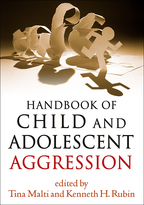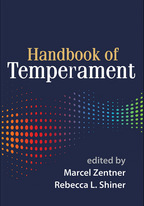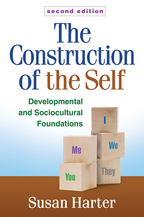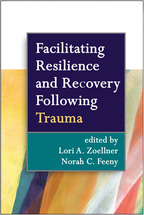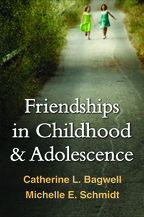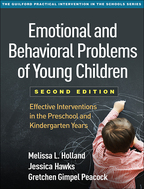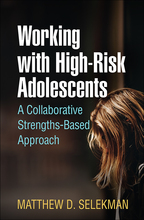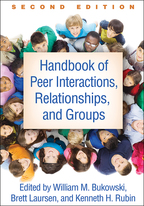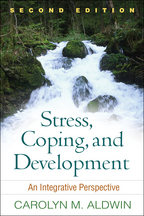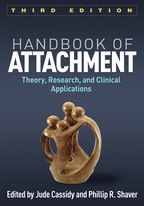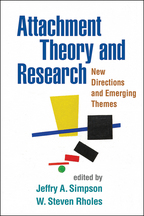Handbook of Child and Adolescent Aggression
Edited by Tina Malti and Kenneth H. Rubin
Foreword by Tracy Vaillancourt
Hardcovere-bookprint + e-book
Hardcover
orderSeptember 26, 2018
ISBN 9781462526208
Price: $82.00 476 Pages
Size: 7" x 10"
Sign up for emails on upcoming titles on Families & Couples (with special discounts)!
“A valuable educational resource, and indeed, readers of this book—whether reading it in part or in its entirety—will find value in the level of explanation and thoroughness of research reviewed in each chapter….The handbook is a welcome addition as it addresses the complex developmental issue of childhood aggression more comprehensively than what has been done previously in general handbooks on social development. Highly recommended. Advanced undergraduates through faculty and professionals.”

—Choice Reviews
“The authors have brilliantly pulled together the most complete volume of information currently available from a wide range of expert contributors on this subject, advancing the field by leaps and bounds. As a mental health professional who treats aggressive children and adolescents in the clinic setting, I have nothing but thanks and admiration for the authors who recognized the need to publish such a valuable and timely book. I thoroughly recommend this as the essential go-to handbook for anyone interested in gaining a better understanding of the current research and practical application strategies for treating child and adolescent aggression. *****!”

—Doody's Review Service
“This volume provides a comprehensive perspective on the development of aggressive behavior problems, as well as prevention and intervention strategies. It captures the expanding body of research in this area, which extends to behavioral genetics, psychophysiology, temperament, classifications, and subtypes—and which goes beyond the individual child to consider parenting, family, peer, social network, and digital contexts. The book offers a much-needed empirical foundation for practice, programming, and policies, from prevention of school violence and bullying to targeted approaches for supporting highly aggressive children and their families.”

—Debra Pepler, PhD, CPsych, Distinguished Research Professor of Psychology, York University, Canada
“Chock-full of information, theory, empirical findings, and insight, this is an encyclopedic handbook for serious scholars. The easy-to-digest introduction by Malti and Rubin wonderfully summarizes the scientific knowledge in the chapters to come. Especially noteworthy is the chapter by Malti and Song on social–emotional development, which articulates a nuanced theory of transactional forces that drive development. Also exceptional is the chapter by Lansford on social-cognitive development, which covers related territory in remarkably accessible fashion. Kudos to the editors!”

—Kenneth A. Dodge, PhD, Pritzker Professor of Public Policy and Professor of Psychology and Neuroscience, Duke University
“Until now, there has been no exhaustive analysis of extant research on the etiology, correlates, and outcomes of childhood aggression. This handbook fills this gap, including contributions from a 'who’s who' of aggression researchers. The 22 chapters cover developmental considerations and outcomes of aggression, contexts that influence aggressive behavior, and research-based interventions. The volume is a 'must read' for graduate students and researchers, as well as practitioners working with aggressive youth.”

—Susan M. Swearer, PhD, Willa Cather Professor and Chair of Educational Psychology, University of Nebraska–Lincoln
“The most up-to-date and comprehensive handbook on child and adolescent aggression. The volume reviews genetic and psychophysiological factors, temperament and social–emotional processes, and key contextual influences, including parents, peers, and social networks. Importantly, individual, family, and school interventions are reviewed, and there are special chapters on cyberbullying and on bullying prevention. I can confidently recommend this handbook to all researchers, teachers, and practitioners in psychology, psychiatry, public health, and other disciplines who are interested in child and adolescent aggression. They will learn a lot from it, as I did.”

—David P. Farrington, PhD, Emeritus Professor of Psychological Criminology, Cambridge University, United Kingdom
—Choice Reviews
“The authors have brilliantly pulled together the most complete volume of information currently available from a wide range of expert contributors on this subject, advancing the field by leaps and bounds. As a mental health professional who treats aggressive children and adolescents in the clinic setting, I have nothing but thanks and admiration for the authors who recognized the need to publish such a valuable and timely book. I thoroughly recommend this as the essential go-to handbook for anyone interested in gaining a better understanding of the current research and practical application strategies for treating child and adolescent aggression. *****!”
—Doody's Review Service
“This volume provides a comprehensive perspective on the development of aggressive behavior problems, as well as prevention and intervention strategies. It captures the expanding body of research in this area, which extends to behavioral genetics, psychophysiology, temperament, classifications, and subtypes—and which goes beyond the individual child to consider parenting, family, peer, social network, and digital contexts. The book offers a much-needed empirical foundation for practice, programming, and policies, from prevention of school violence and bullying to targeted approaches for supporting highly aggressive children and their families.”
—Debra Pepler, PhD, CPsych, Distinguished Research Professor of Psychology, York University, Canada
“Chock-full of information, theory, empirical findings, and insight, this is an encyclopedic handbook for serious scholars. The easy-to-digest introduction by Malti and Rubin wonderfully summarizes the scientific knowledge in the chapters to come. Especially noteworthy is the chapter by Malti and Song on social–emotional development, which articulates a nuanced theory of transactional forces that drive development. Also exceptional is the chapter by Lansford on social-cognitive development, which covers related territory in remarkably accessible fashion. Kudos to the editors!”
—Kenneth A. Dodge, PhD, Pritzker Professor of Public Policy and Professor of Psychology and Neuroscience, Duke University
“Until now, there has been no exhaustive analysis of extant research on the etiology, correlates, and outcomes of childhood aggression. This handbook fills this gap, including contributions from a 'who’s who' of aggression researchers. The 22 chapters cover developmental considerations and outcomes of aggression, contexts that influence aggressive behavior, and research-based interventions. The volume is a 'must read' for graduate students and researchers, as well as practitioners working with aggressive youth.”
—Susan M. Swearer, PhD, Willa Cather Professor and Chair of Educational Psychology, University of Nebraska–Lincoln
“The most up-to-date and comprehensive handbook on child and adolescent aggression. The volume reviews genetic and psychophysiological factors, temperament and social–emotional processes, and key contextual influences, including parents, peers, and social networks. Importantly, individual, family, and school interventions are reviewed, and there are special chapters on cyberbullying and on bullying prevention. I can confidently recommend this handbook to all researchers, teachers, and practitioners in psychology, psychiatry, public health, and other disciplines who are interested in child and adolescent aggression. They will learn a lot from it, as I did.”
—David P. Farrington, PhD, Emeritus Professor of Psychological Criminology, Cambridge University, United Kingdom

